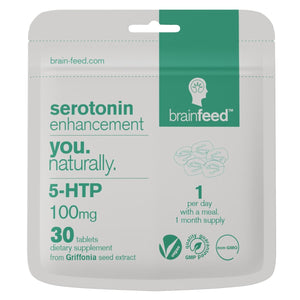How to control your emotions by indulging in them: Try emotional regulation
filter
Emotions impact your thoughts and behaviour and fuel your life force. They are constantly present in your body and mind. Today’s society strives to only feel positive emotions and therefore often asks “How to control your emotions?”. The trick is to allow yourself to feel all emotions and try regulating them instead of controlling them. Wondering how to do that? Read about the neuroscience of emotional regulation and discover 5 science-backed strategies to effectively regulate your emotions.
The ABCs of emotions
Emotions are a natural and normal part of being human. The word emotion comes from "motion" and all emotions continuously move and change on the spectre of emotions or from one to the other[1]. The theory of emotions is set on two broad schools that help you understand them: the categorical and the dimensional approach. The categorical approach believes that emotions are discrete and can be categorized into a limited number of basic emotions; enjoyment, sadness, anger, fear and disgust. The dimensional approach, on the other hand, suggests that emotions are continuous and can be usually described along two dimensions; as being pleasant or unpleasant and arousing or relaxing[2,3]. Understanding the basics of emotions is important for managing them effectively and improving your overall well-being.
How to get from a “hot mess” to a “zen master”
Emotional regulation is the process by which you influence which emotions you feel, when you feel them, and how you experience and express them[4]. There are three emotional regulation processes.
- Reappraisal describes rethinking the emotional situation and your response to it, allowing you to get some closure as to why you felt the way you did[4]. Imagine getting angry at your best friend for not inviting you to a dinner with another friend group. If you take the time to review the situation and acknowledge your anger, you can conclude that you’re angry because you felt left out although you still know your best friend cares for you. Reappraisal gives you the power to move on from that situation. So, instead of holding on to your anger, you are now able to take certain actions in that moment and in the future to make sure you feel cared for.
- You are now also able to fully accept your feelings, which is another emotional regulation process known as acceptance[5].
- Suppression, the last of the emotional regulation strategies, is the least functional one[5]. Instead of feeling the emotions, you shut them down and suppress them. That may work in certain situations when other strategies are harder to apply, for example in a highly stressful situation that needs you to take action immediately. It inhibits your feelings which helps you block out unpleasant thoughts and therefore you’re more able to react to the situation[6]. Using this strategy constantly can have serious consequences, however, as your feelings stay locked up inside[7].
Life hack: good and frequent emotional regulation
Usually, emotions engage the “emotional” parts of the brain such as a small almondlike structure that controls emotions known as the amygdala[8]. During emotional regulation processes, brain imaging studies have implicated several other brain regions that work their magic to help you rethink what happened and embrace your feelings. Three brain parts get activated to help you get through the situation and the feelings, the first being the frontal part of the brain which works as a buffer for the strong-felt emotions[5]. When a part around the amygdala activates, it gives you more cognitive control, while the back top part of the brain helps you analyse what’s happening[5]. These brain parts get activated quicker the more we train them to activate. That means that you get better and quicker at emotional regulation strategies the more you use them[6]. This has been linked to better mental health, social relationships, and academic and occupational success[5].
The ultimate mood regulator: serotonin’s building block
There is one brain messenger that is the key to unlocking your emotional potential. Meet serotonin, your feel-good chemical which is an important brain messenger and hormone that mediates mood and temperament[9,10]. It is usually paired together with dopamine, oxytocin, and endorphins that form the so-called happiness chemicals. Serotonin can be released when you’re out in the sunlight, while exercising, getting a massage or remembering happy events[11]. When your serotonin levels are normal, you feel more emotionally stable and happier[12]. Serotonin can only be released if there is enough serotonin produced. For that to happen you need to ingest a nutrient called tryptophan with a protein-rich diet[13]. When tryptophan enters the brain from the blood, another molecule joins in and together they transform into the direct building block of serotonin, called 5-htp[14]. You can also opt for a high-quality 5-htp supplement. The 5-htp in brain feed’s 5-htp 100 mg tablets is extracted and isolated from Ghanian Griffonia Simplicifolia seeds. 98% of the tablet is comprised of 5-htp making it the smallest, nutrient-dense tablet available without including unnecessary bulking agents. Get 15% off your first purchase by using code ‘NEW15’.
5 science-backed strategies for emotional regulation
Now that you know why emotional regulation strategies are important, here are some common techniques that you can use to get better at emotional regulation.
-
Writing
Writing is an effective way to express emotions and communicate with others. Regardless of your skills, writing can help you process your emotions and gain clarity on how you feel[15]. Every time you feel overwhelmed, try writing down why that is. For example: “I feel sad because nobody hears me”. This is just one of many techniques you can use. -
Mindfulness
Practicing mindfulness through meditation, yoga, or breathing exercises can help you become more aware of your emotions and regulate them more effectively[16]. Try this breathing exercise: Let your breath flow as deep down into your belly as comfortable while trying to breathe in through the nose and out through your mouth. Breathe in gently and regularly. Then let it flow out gently, counting from 1 to 5. Repeat as many times as you want. -
Identify and accept your emotions
- Use "I" statements: When expressing your feelings, “I” statements are powerful because they promote the connection between yourself and the feelings[18]. Try saying “I felt really embarrassed the other night in front of our friends when this topic came up, because…” instead of “You embarrassed me at dinner the other night like you always do”.
- Describe your feelings: When sharing your emotions, be as clear as possible by using your vocabulary of feelings and describing the situation that led to those feelings[19]. When talking about your emotions, try answering these questions: “What happened to make you feel the way do? Where in the body and how strongly can you feel the emotions? What are the emotions you are feeling? Are the emotions pleasant or unpleasant?”
By using these techniques, you can learn to manage and express your emotions in a healthy and constructive way or in other words work on your emotional intelligence.
Emotion regulation is a complex process with huge implications for mental health and social relationships. Start working on effective emotional regulation strategies today so you can lead a happier, healthier, and more fulfilling life.
References
[1]
Freshwater, S. (2017). Understanding Emotions. Spacious Therapy. https://spacioustherapy.com/understanding-emotions/
[2] McStay, A. (2018). Leaky Emotions: The Case of Facial Coding. In Emotional AI: The Rise of Empathic Media. SAGE Publications Ltd.
[3] Cowen, A., Sauter, D., Tracy, J. L., & Keltner, D. (2019). Mapping the Passions: Toward a High-Dimensional Taxonomy of Emotional Experience and Expression. Psychological Science in the Public Interest, 20(1), 69–90.
[4] Martin, R. E., & Ochsner, K. N. (2016). The neuroscience of emotion regulation development: implications for education. Current Opinion in Behavioral Sciences, 10, 142–148.
[5] Grecucci, A., Theuninck, A., Frederickson, J., & Job, R. (2005). Mechanism of Social Emotion Regulation: From Neuroscience to Psychotherapy. In Handbook of Emotion Regulation. Nova Publishers.
[6] Leach, N. (2023). ‘Blocking’ negative thoughts may help your mental health, says controversial new study. BBC Science Focus. https://www.sciencefocus.com/news/suppress-negative-thoughts
[7] Emotional Expression (n.d.). The University of Kansas Health System. https://www.kansashealthsystem.com/health-resources/turning-point/programs/resilience-toolbox/emotional-expression/why-is-emotional-expression-important
[8] Amygdala - an overview (n.d.). Science Direct. https://www.sciencedirect.com/topics/neuroscience/amygdala
[9] Jones, L. A., Sun, E. W., Martin, A. M., & Keating, D. J. (2020). The ever-changing roles of serotonin. The International Journal of Biochemistry & Cell Biology, 125, 105776.
[10] Hariri, A. R., & Brown, S. M. (2006). Serotonin. American Journal of Psychiatry, 163(1), 12–12.
[11] Korb, A. (2017). Boosting Your Serotonin Activity. Psychology Today. https://www.psychologytoday.com/intl/blog/prefrontal-nudity/201111/boosting-your-serotonin-activity#:~:text=The%20four%20ways%20to%20boost,a%20more%20in%2Ddepth%20look.
[12] Serotonin (2022). Cleveland Clinic. https://my.clevelandclinic.org/health/articles/22572-serotonin#:~:text=Mood%3A%20Serotonin%20in%20your%20brain,serotonin%20are%20associated%20with%20depression.
[13] Tryptophan (n.d.). National Library of Medicine. https://medlineplus.gov/ency/article/002332.htm#:~:text=Tryptophan%20is%20an%20amino%20acid,get%20it%20from%20your%20diet.
[14] Jenkins, T. A., Nguyen, J. C. D., Polglaze, K. E., & Bertrand, P. P. (2016). Influence of Tryptophan and Serotonin on Mood and Cognition with a Possible Role of the Gut-Brain Axis. Nutrients, 8(1), 56.
[15] Keech, K. N., & Coberly-Holt, P. G. (2021). Journaling for Mental Health: In K. Elufiede & C. Barker Stucky (Eds.), Advances in Linguistics and Communication Studies (pp. 39–44). IGI Global.
[16] Decker, J. T., Brown, J. L. C., Ashley, W., & Lipscomb, A. E. (2019). Mindfulness, meditation, and breathing exercises: reduced anxiety for clients and self-care for social work interns. Social Work with Groups, 42(4), 308–322.
[17] Ma, H., Sun, X., Lawson, G., Wang, Q., & Zhang, Y. (2023). Visualising emotion in support of patient-physician communication: an empirical study. Behaviour & Information Technology, 42(11), 1782–1800.
[18] How to Use ‘I’ Statements Instead of ‘You’ Statements During Difficult Conversations (n.d.). Relationships Australia New South Wales. https://www.relationshipsnsw.org.au/blog/i-statements-vs-you-statements/
[19] Gettenberg, A. (2022). An Analysis of the Relation Between Vocabulary and Emotion Regulation: Toward Developing Problem Identification Tools for the School Setting [Doctoral dissertation, St. John's University]. ProQuest Dissertations.


 alertness
alertness
 cognition
cognition
 sleep
sleep
 wellbeing
wellbeing





Leave a comment
Open tab